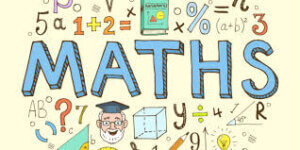Maths
Mathematics at De Bohun

Intent
Mathematics is an important creative discipline that helps us to understand and change the world. We want all pupils at De Bohun Primary School to experience the beauty, power and enjoyment of mathematics and develop a sense of curiosity about the subject. We believe all children can achieve in mathematics and teach for a secure and deep understanding of mathematical concepts.
We strive for all pupils to:
- To develop a deep understanding of mathematics through a concrete (Bruner – ‘Enactive’), pictorial (‘Iconic’) and abstract (‘Symbolic’) approach in learning to ensure secure understanding.
- To become fluent in the fundamentals of mathematics so that they develop conceptual understanding and the ability to recall and apply knowledge rapidly and accurately.
- To reason mathematically by following a line of enquiry and develop and present a justification, argument or proof using mathematical language.
- To be able to solve problems by applying their mathematics to a variety of problems with increasing sophistication, including in unfamiliar contexts and to model real-life scenarios.
- To have an appreciation of number and number operations, which enables mental calculations and written procedures to be performed efficiently, fluently and accurately to be successful in mathematics.

Implementation
Maths is taught daily at De Bohun Primary School. Our sequence of learning in maths can be seen in our Maths Coverage Maps which have been created for each year group and it is based on an adapted White Rose Scheme of Learning. The learning is sequenced so that there is logical progression across units. For example, a unit on place value might be followed by a unit on addition and subtraction as addition and subtraction would require understanding of place value as a foundation to build on.
Our adaptations to the White Rose Scheme of Learning enable teachers to use professional judgement on what their learners need to be taught to gain a secure depth of understanding. For example, this could be through practical ‘concrete’ or ‘pictorial’ activities or ‘low threshold, high ceiling’ investigative activities.
Mathematics is taught using a concrete, pictorial and abstract approach for a deep, conceptual understanding of mathematics concepts and to improve retention.
Concrete representation: a pupil is first introduced to an idea or skill by acting it out with real objects. This is a ‘hands-on’ component using real objects and is a foundation for conceptual understanding.
Pictorial representation: a pupil has sufficiently understood the ‘hands-on’ experiences performed and can now relate them to representations, such as a diagram or picture of the problem.
Abstract representation: a pupil is now capable of representing problems by using mathematical notation, for example, 12 x 2 = 24. It is important that conceptual understanding, supported by the use of representation, is secure for all procedures. Reinforcement is achieved by going back and forth between these representations.
At De Bohun, we consolidate our maths skills and retrieve prior knowledge at the start of each maths lesson through our Quick Maths. Years 1 to Year 6 do this for ten minutes every day at the start of maths lessons. Years 3 and 4 also use Quick Maths as a further opportunity to teach conceptual understanding of times tables and to develop rapid recall of times table facts.
We explicitly teach children to gain a secure understanding of maths vocabulary so that our children can communicate in the language of maths. We do this by creating vocabulary banks for each unit before starting the unit of work. Children revisit vocabulary banks during units to consolidate definitions of words using spaced retrieval practice to increase retention of their understanding of mathematical vocabulary. Children are encouraged to speak in full sentence answers with opportunities for whole class repetition. E.g. In response to the question, ‘What does 2 x 4 =?’ The children would answer, ‘Two times four equals eight.’ We also ensure that maths vocabulary is displayed in classrooms with visuals to support understanding.

Impact
Our aim is for pupils to master mathematical concepts and demonstrate their understanding in multiple ways. This includes explaining their ideas using mathematical language and applying concepts to new problems in unfamiliar situations. It is also our aim that children can demonstrate a quick recall of facts and procedures. This includes the recall of the times tables and the flexibility and fluidity to move between different contexts and representations of mathematics.

Maths Fundamentals Documents
Year 1 Maths Fundamentals
Year 2 Maths Fundamentals
Year 3 Maths Fundamentals
Year 4 Maths Fundamentals
Year 5 Maths Fundamentals
Year 6 Maths Fundamentals
Maths Coverage Documents
The full documentation for the National Curriculum can be accessed via the Gov.UK website here.




